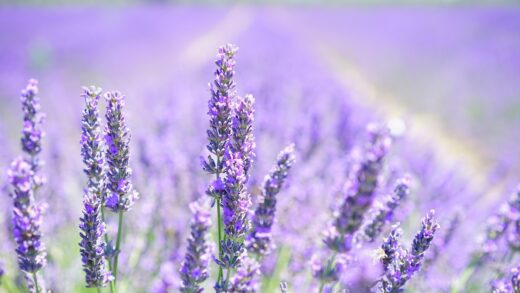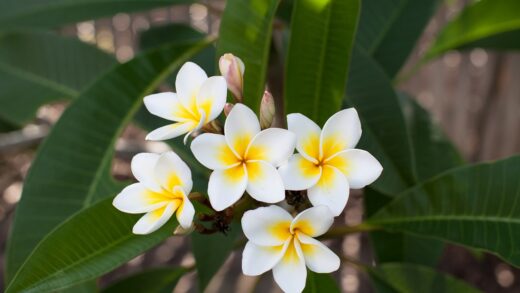Providing Darwin’s barberry with the appropriate nutrients is key to ensuring vigorous growth, abundant flowering, and overall plant health. While this shrub is not an excessively heavy feeder and is adaptable to a range of soil conditions, a strategic approach to fertilization can significantly enhance its performance. In naturally fertile garden soil rich in organic matter, it may require very little supplemental feeding once established. However, in poorer, less fertile soils, or for plants grown in containers, a regular feeding schedule is beneficial. The goal is to supply a balanced profile of essential nutrients without promoting excessive, weak growth that can be more susceptible to pests and diseases.
The primary nutrients required by plants are nitrogen (N), phosphorus (P), and potassium (K), and each plays a distinct role in the health of Darwin’s barberry. Nitrogen is crucial for lush, green foliage growth. Phosphorus is vital for strong root development and for the process of flower and fruit production. Potassium contributes to the overall vigor of the plant, improving its resistance to disease, drought, and cold. A balanced fertilizer, which contains these three macronutrients in relatively equal proportions, is generally the most suitable choice for this shrub, supporting all aspects of its growth cycle.
The timing of fertilizer application is just as important as the type of fertilizer used. The best time to feed Darwin’s barberry is in the early spring, just as new growth begins to emerge. This provides the plant with the necessary resources to support the development of new leaves and its spectacular display of spring flowers. A single application of a slow-release granular fertilizer at this time is often sufficient for the entire growing season for plants in the ground. Avoid fertilizing late in the summer or in autumn, as this can stimulate new growth that will not have time to harden off before winter, making it vulnerable to frost damage.
Organic matter is the cornerstone of good soil fertility and should be the primary source of nutrients for your barberry. Incorporating well-rotted compost or manure into the soil at planting time and applying it as a surface mulch annually provides a slow, steady release of a wide range of nutrients and micronutrients. This approach not only feeds the plant but also improves soil structure, water retention, and the health of the soil ecosystem. Chemical fertilizers should be seen as a supplement to this organic foundation, used judiciously to address specific needs or deficiencies.
Understanding soil fertility and pH
Before embarking on a fertilization program, it is highly beneficial to have a basic understanding of your garden soil’s existing fertility and pH. A simple soil test kit, available from garden centers, can provide valuable insights into the nutrient levels and whether your soil is acidic, neutral, or alkaline. Darwin’s barberry is adaptable but generally prefers a soil pH that is slightly acidic to neutral, typically in the range of 6.0 to 7.0. Knowing your soil’s starting point allows you to make more informed decisions about what, if any, amendments are needed.
More articles on this topic
If your soil is naturally rich and loamy, with a high content of organic matter, your Darwin’s barberry may thrive with minimal to no supplemental fertilization. Healthy soil ecosystems, teeming with beneficial microbes, worms, and fungi, are very efficient at cycling nutrients and making them available to plant roots. In such cases, an annual top-dressing of compost or leaf mold as a mulch may be all that is required to replenish nutrients and maintain the soil’s vitality. This organic approach fosters a self-sustaining system that benefits the entire garden.
Conversely, if you are gardening on very sandy soil, nutrients can be leached away quickly by rainfall, leading to deficiencies. In heavy clay soils, nutrients may be present but locked up and unavailable to the plant. In these situations, a more proactive approach to fertilization is warranted. Sandy soils will benefit from both regular applications of organic matter to improve retention and supplemental feeding with a balanced fertilizer. Clay soils are greatly improved by the addition of organic matter to enhance drainage and aeration, which in turn makes existing nutrients more accessible to the plant’s roots.
Soil pH also has a significant impact on nutrient availability. Even if nutrients are present in the soil, an inappropriate pH level can prevent the plant from being able to absorb them. For example, in highly alkaline soils (high pH), iron can become unavailable, leading to iron chlorosis, which manifests as yellowing leaves with green veins. If a soil test reveals a pH outside the ideal range for your barberry, you can take steps to adjust it. Applying ericaceous compost or sulfur can help to lower the pH of alkaline soils, making them more suitable for the plant.
Choosing the right fertilizer
When it comes to selecting a fertilizer for Darwin’s barberry, a balanced, general-purpose formula is usually the best choice. Look for a product where the N-P-K numbers (representing the percentage of Nitrogen, Phosphorus, and Potassium) are relatively equal, such as a 10-10-10 or a 7-7-7. These formulations provide all-round support for leaf growth, root development, and flowering. Slow-release granular fertilizers are particularly well-suited for shrubs, as they break down gradually over several months, providing a steady supply of nutrients rather than a sudden jolt that can burn roots.
More articles on this topic
Organic fertilizers are an excellent alternative to synthetic chemical products and work in harmony with the soil’s natural ecosystem. Options such as fish, blood, and bone meal, or pelleted chicken manure, are effective, balanced choices. These materials not only supply N-P-K but also a host of essential micronutrients and help to feed the beneficial microorganisms in the soil. They release their nutrients more slowly as they are broken down by soil life, reducing the risk of over-fertilizing and nutrient runoff into the environment.
For a targeted boost, especially to encourage flowering, you could opt for a fertilizer that is slightly higher in phosphorus and potassium. A rose or shrub-specific food often has this type of formulation. This can be beneficial if your plant is well-established but seems to be lacking in flower production. However, it is important to first rule out other potential causes for poor flowering, such as insufficient sunlight or improper pruning, before turning to specialized fertilizers, as an excess of any one nutrient can create imbalances.
For plants grown in containers, a liquid fertilizer is often the most practical choice. The frequent watering required for pots leaches nutrients out of the compost more quickly, so they need to be replenished regularly. A balanced liquid feed, diluted according to the manufacturer’s instructions, can be applied every two to four weeks during the growing season from spring through to late summer. This provides an easily accessible source of nutrients to keep the container-grown shrub healthy and productive.
Application techniques for effective feeding
The method you use to apply fertilizer is important to ensure it is used effectively by the plant and to avoid potential damage. For granular fertilizers, the application should be focused on the plant’s root zone, which generally extends to the edge of its canopy, known as the drip line. Sprinkle the recommended amount of fertilizer evenly onto the soil surface around the base of the shrub, keeping it away from the main stem to prevent chemical burn.
After spreading the granular fertilizer, it is crucial to incorporate it into the top few centimeters of soil. You can do this by gently raking or cultivating the soil surface. This step helps to bring the granules into contact with soil moisture and microbes, which are necessary for them to start breaking down and releasing their nutrients. It also prevents the fertilizer from being washed away by heavy rain or irrigation before it has had a chance to work.
Following the application and incorporation of the fertilizer, water the area thoroughly. This serves two important purposes. Firstly, it activates the fertilizer, dissolving the nutrients and allowing them to begin moving down into the root zone where they can be absorbed by the plant. Secondly, it helps to dilute the fertilizer, preventing high concentrations from building up in one spot, which could potentially burn the plant’s delicate feeder roots. This final watering is a non-negotiable step in the process.
When using liquid fertilizers, particularly for container plants, always dilute them correctly according to the product’s instructions. Applying a concentrate directly can severely damage the plant. It is also best to apply liquid feed to soil that is already moist. Fertilizing a plant when the soil is bone dry can cause the roots to absorb the nutrients too quickly, leading to fertilizer burn. Therefore, water the plant with plain water first, allow it to drain, and then apply the diluted liquid fertilizer.
Recognizing nutrient deficiencies
Observing your Darwin’s barberry for signs of nutrient deficiencies is a key part of its ongoing care. One of the most common symptoms to watch for is chlorosis, which is a yellowing of the leaves. The specific pattern of yellowing can often provide clues as to which nutrient is lacking. A general yellowing of older, lower leaves often points to a nitrogen deficiency, as nitrogen is a mobile nutrient that the plant will move from old to new growth. The plant may also appear stunted and spindly.
If the yellowing occurs primarily on the new, younger leaves, and the veins remain green, this is a classic symptom of iron deficiency. This condition is often caused not by a lack of iron in the soil, but by a high soil pH that makes the iron unavailable to the plant. In such cases, simply adding more iron may not solve the problem; adjusting the soil pH or applying a chelated iron supplement, which is more easily absorbed, is a more effective solution.
A deficiency in phosphorus can be harder to diagnose but may manifest as stunted growth and leaves that take on a dull, slightly purplish tinge. Poor flowering and fruiting can also be an indicator that phosphorus levels are inadequate. Potassium deficiency can sometimes appear as yellowing or browning along the edges or tips of the older leaves, and the plant may show a general lack of vigor and be more susceptible to disease.
When you suspect a nutrient deficiency, the first course of action should be to ensure the basics of care are correct – particularly watering and soil drainage – as root stress can impair nutrient uptake. If the problem persists, an application of a balanced, all-purpose fertilizer is a good next step. For specific and persistent issues, a soil test can confirm the deficiency and guide a more targeted treatment. Addressing these signs early will help keep your Darwin’s barberry in peak condition.
📷 Michael Wolf, CC BY-SA 3.0, via Wikimedia Commons


















